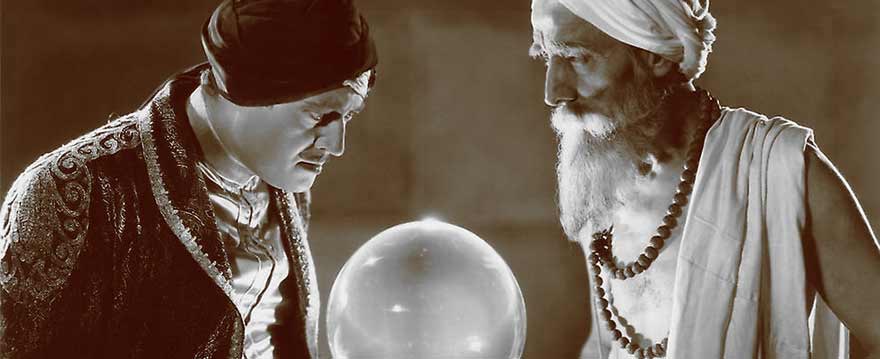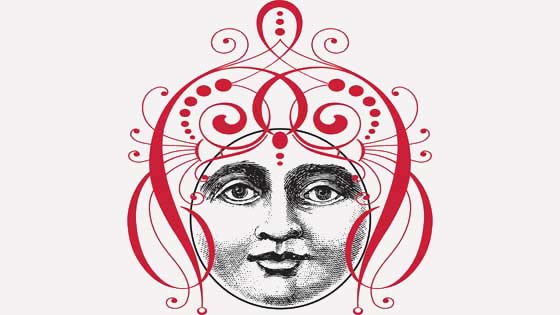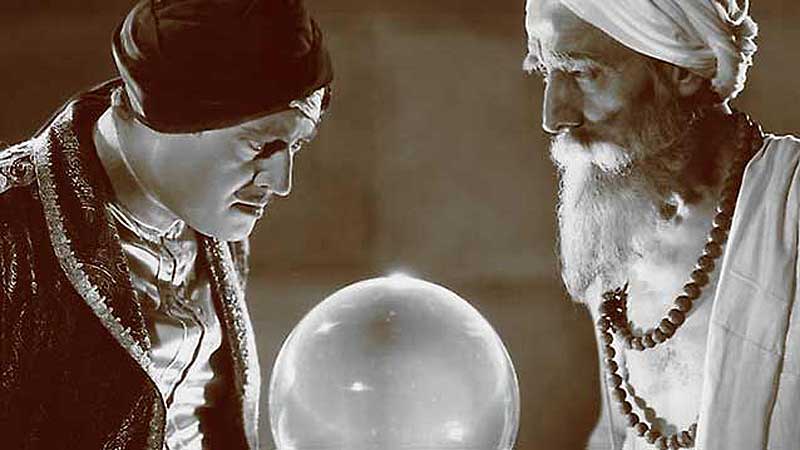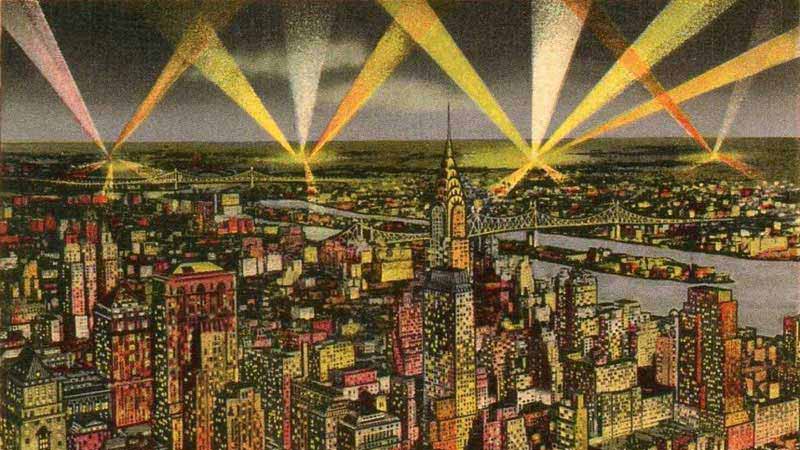
by Dr. Will Given
University of California, San Diego
Understanding Magic Audiences
Close your eyes and picture for me your perfect audience. What would that look like? Chances are, your idealized audience would respond enthusiastically to the specific framework of your show – they would laugh at all your jokes or hang on every one of your words in suspense. Most importantly, they would applaud wildly at the end of your performance (and maybe even give you a standing ovation). After the show, they would talk to one another about the unexplained phenomenon they just witnessed and marvel at your skills as a conjurer.
Sounds lovely, no? But, how do you view your audiences? What happens if they don't laugh where they are "supposed" to or applaud when you stand there on stage (and perhaps extend your arms and stamp your foot to ask for said applause like some may suggest)? Do you think of them as just "a bad crowd tonight" or "a dead audience"? Do you blame them for not getting some aspect of your performance? Do you measure them against past audiences who may have responded more favorably? Do you measure them against your own imagined "perfect" audience?
In this article, I am going to be delving into a very important concept for any performer – that of the passive versus active spectator. Throughout this article, when I use the word audience, I am referring to any group, no matter the size, who has assembled specifically to see you perform, and have most likely paid to do so. While a lot of these concepts still hold true to those gathered around the dinner table at the family reunion watching you perform card tricks, I am here focusing on the concept of the formal theatrical audience.
To begin with, you must understand that audiences are active and dynamic, they are not passive and should not be treated as such. The passive audience seems a bit like our model of what we might picture our "perfect" audience to look like – laughing where we want, applauding where we want. If the audience does precisely this, why not carry a bucket of fish with you on stage so you can toss some out to your crowd, just like you would with trained seals. What happens in this passive model is a feedback loop – where the audience is reacting because they feel like they are expected to do so in a certain way and your show's pacing is likewise hinging upon that predetermined response. This creates a static (and boring) performance.
What does and active audience look like then? An active audience is involved in the creation of the performance. They do this through the creation of what I call a negative-space performance. Each and every spectator is experiencing the show in her or his own unique way based entirely on who she or he is as a person. They are bringing to your show all of their past experiences with magicians, both live and on TV. They are bringing their own past experiences with the theatre. They are bringing into your performance every single nuanced emotion they have experienced that day prior to even stepping foot into your performance venue. You have those in your audience who have experienced a recent loss and those who are celebrating some event that matters to them. So, the key to treating your audience as active participants in the creation of your show, is that you must first acknowledge that there is no such thing as a singular audience and no two audiences can ever be the same.
Your audience is comprised only of unique individuals. Each and every single one of them has their own unique identity they are bringing to the show that is shaped by myriad factors: culture, belief system, upbringing, socioeconomic status, you name it. There will be those who don't laugh because they do not get a joke, and those who laugh when they are scared. There are those who applaud at every single thing you do, and those who do not because they believe it would be disrespectful to you as a performer to do so.
While all of this may seem like common sense and not necessary to be discussed, ask yourself how you treat your audiences? Do you treat them as one giant herd of trained seals? Do you try to write their responses for them, i.e. "hold here for applause"? More importantly, do you treat them as if they are intelligent individuals who have agency in helping you create the theatrical experience?
To help illustrate this, I want to use two examples. The first is from a production I did of a play entitled, Party for Six, by Wolfgang Bauer. The entirety of the first act involved a party – one that took place behind a closed door. The second act involved my character now passed out drunk the morning after the party on a couch center stage. No dialogue. No action. Just drunk character snoring away. When I first got the script, I thought it was going to be the easiest thing ever as an actor – simply lying there doing nothing for close to half an hour. I also, in all honesty, thought it was the most ridiculous play I had ever been a part of. But after the first night's performance, I realized something that has stuck with me ever since – that the audience is the one's helping to actively create the performance.
Every single night as I lied there on that ratty sofa trying not to break character, the audience took over the show. First, there would be some people who would politely start clearing their throats or rustling their programs thinking maybe I actually had fallen asleep and missed my cue. Others would then start to worry, looking up to the tech booth and asking other people if they thought something was wrong. Inevitably, each night, the audience's emotional rollercoaster would lead to outrage. People threw programs at me on stage. One night, someone got up and stomped up the aisle as he left the theatre, proclaiming to everyone how much he "fucking hated the theatre." What I realized is that we are always tracking the emotional arc of our show itself, but how often are we giving power to the emotional arc the different audience members are going through?
This is not necessarily congruent with the arc of the story, so we need to be very cognizant of how we treat our audiences. What do we want our audiences to believe? Take a sawing-in-half illusion – you show someone, put that someone in a box, bifurcate that someone, and then restore that someone. Great. What do you want your audience to believe about what they are seeing? There is not a single person in your audience who believes that what they are seeing is real. If they did, they would call the police. So, what do you want them to feel? How do you want them to actively construct what they are seeing in their minds?
This is the only place where magic exists – in your spectators' minds.
Let's look at our second, and final, example, that of Hamlet. The "To be or not to be" soliloquy is probably the most famous in all theatre. In it, Hamlet is alone on stage asking a very important question – should he kill himself or not. Shakespeare was exceptionally aware of the need to activate the audience, so his plays are peppered with characters directly addressing the audience. A director could stage the "To be or not to be" scene using a passive audience model and have Hamlet just deliver his famous lines. The director would know that the audience would sit there and watch and be like "oh, I know this speech" or maybe feel Hamlet's pain en masse.
Now, what happens if a director were to stage this with an active audience model? What if Hamlet goes out into the audience and asks spectators what he should do. What if Hamlet is now kneeling right beside you, holding your hand, and asking you, personally, if he should kill himself or not. The audience is now permitted to experience an entire gamut of emotions – all different and based on where they are in the house. Some may think it's very bizarre seeing an actor break the imaginary fourth wall; others may get frustrated not being able to hear or see the famous scene.
The audience is no longer being acted at, but rather, they are being acted with.
Does this matter to us in magic? Absolutely. If we think that audiences care only for that "ta-da" moment of our trick, we are missing what the audience is really there for – the audience wants an experience. They want to be a part of something. That is why they dressed up and made the effort to travel to go see you perform. If they wanted to just see a bunch of tricks, they could go see trained seals perform.
So, allow them to be part of an experience. Challenge yourself to find ways to make the show their show and not your show. Look outside the box. Don't perform your
That is what memorable theatre is.
Dr. Given is a writer and director. He has PhDs in Drama and in Theatre and is a member of the prestigious The Dramatists Guild. He has been involved in over twenty-five stage productions as an actor, director, or dramaturg. He has written for television, film, and the stage, and served as a screenwriting judge for the Austin Film Festival, where he has analyzed and given feedback on hundreds of scripts. He is a Magician Member of the Academy of Magical Arts and holds the rank of AIMC in The Magic Circle. Dr. Given is based in Southern California where he has taught at a university for the past ten years, helping develop the next generation of writers. He wants nothing more than to help you make your show the best it can be. You can learn more about his directorial services by writing him at The Magic Director.
A Jolly Genie?

The Magic Oracle is a FREE site but I still must pay dastardly server fees! Please, donate ANY amount... $1, $5, $10, why not $1 million?
THANK YOU for keeping magic alive... and me, a Jolly Genie!



